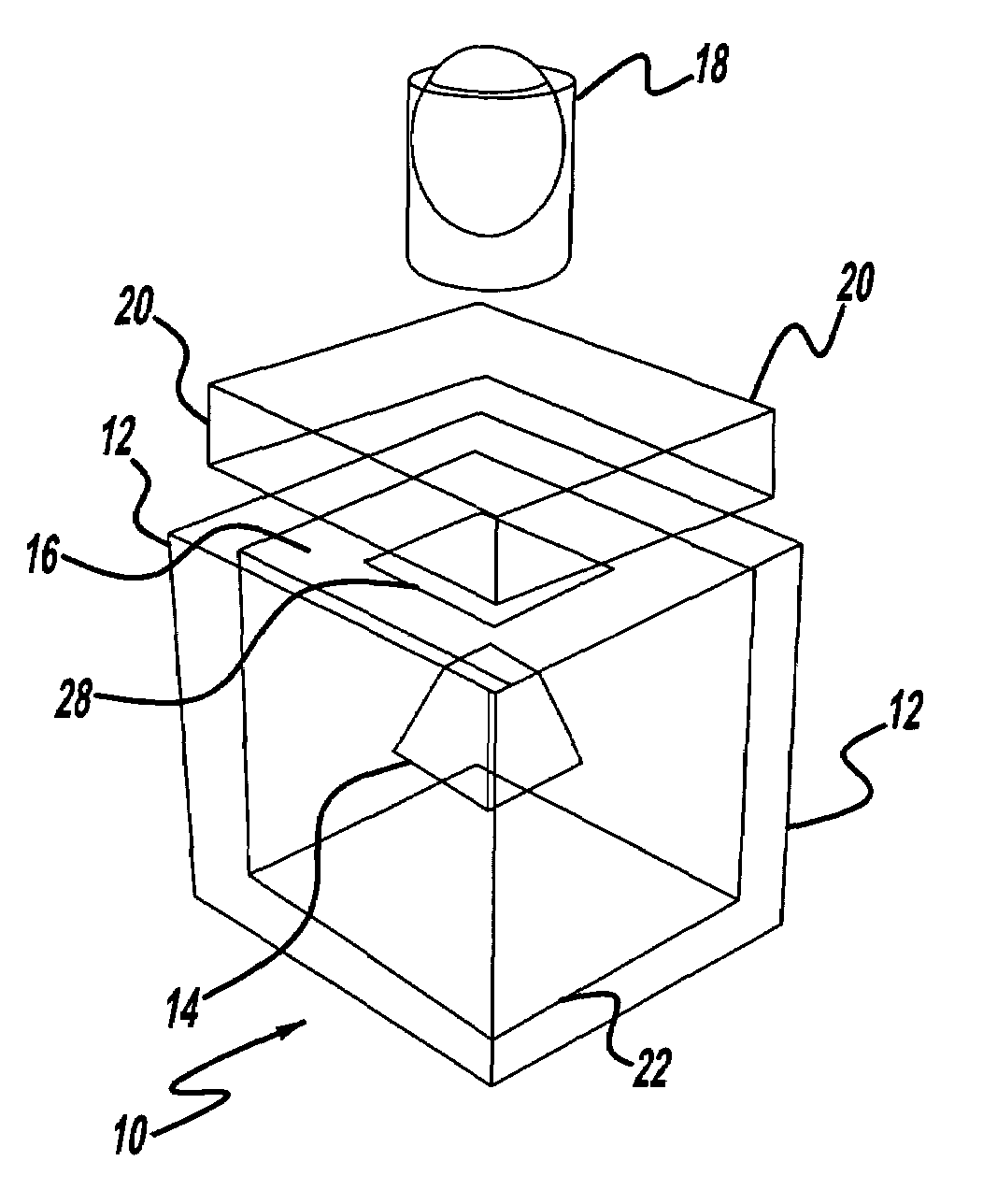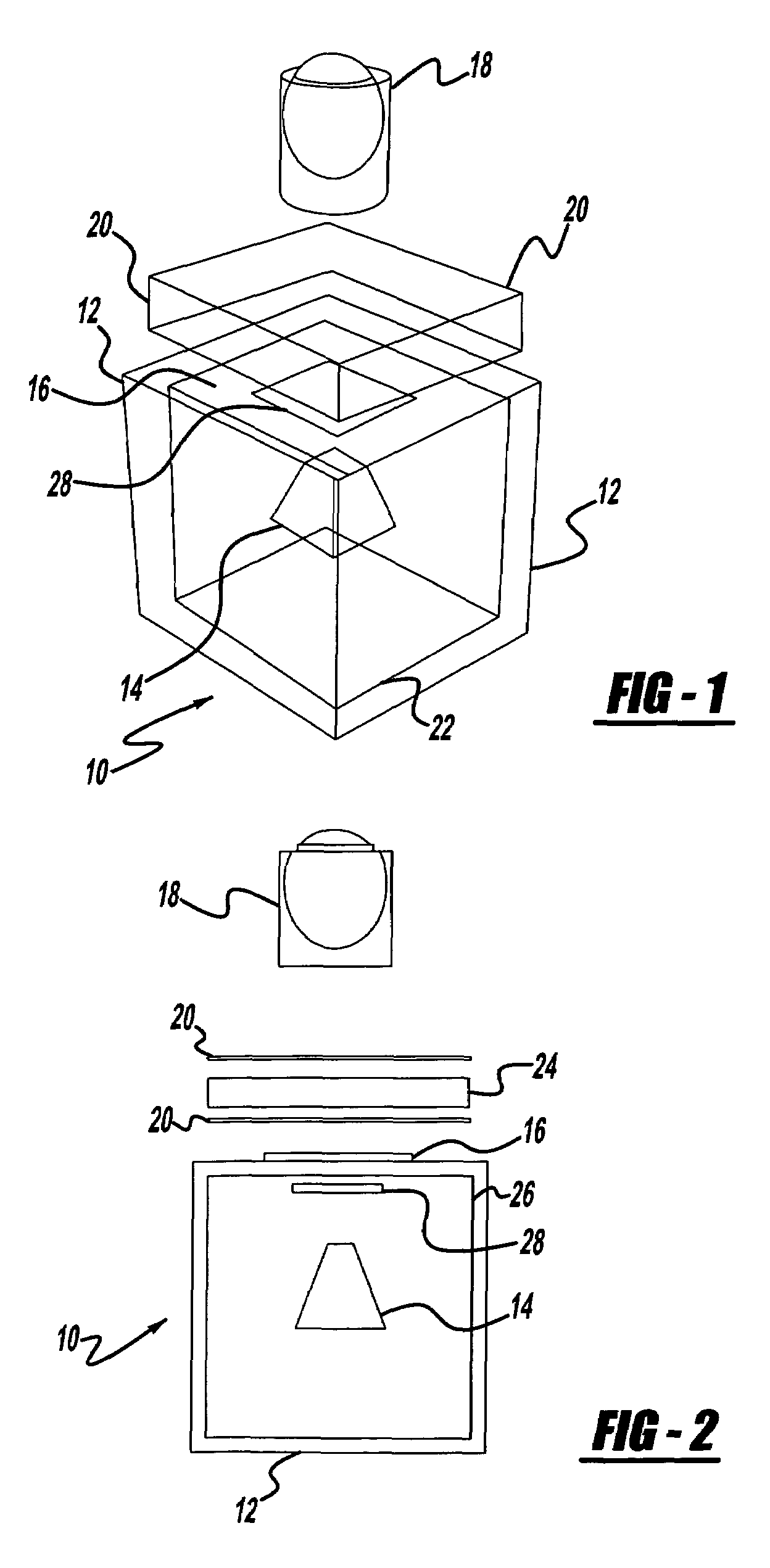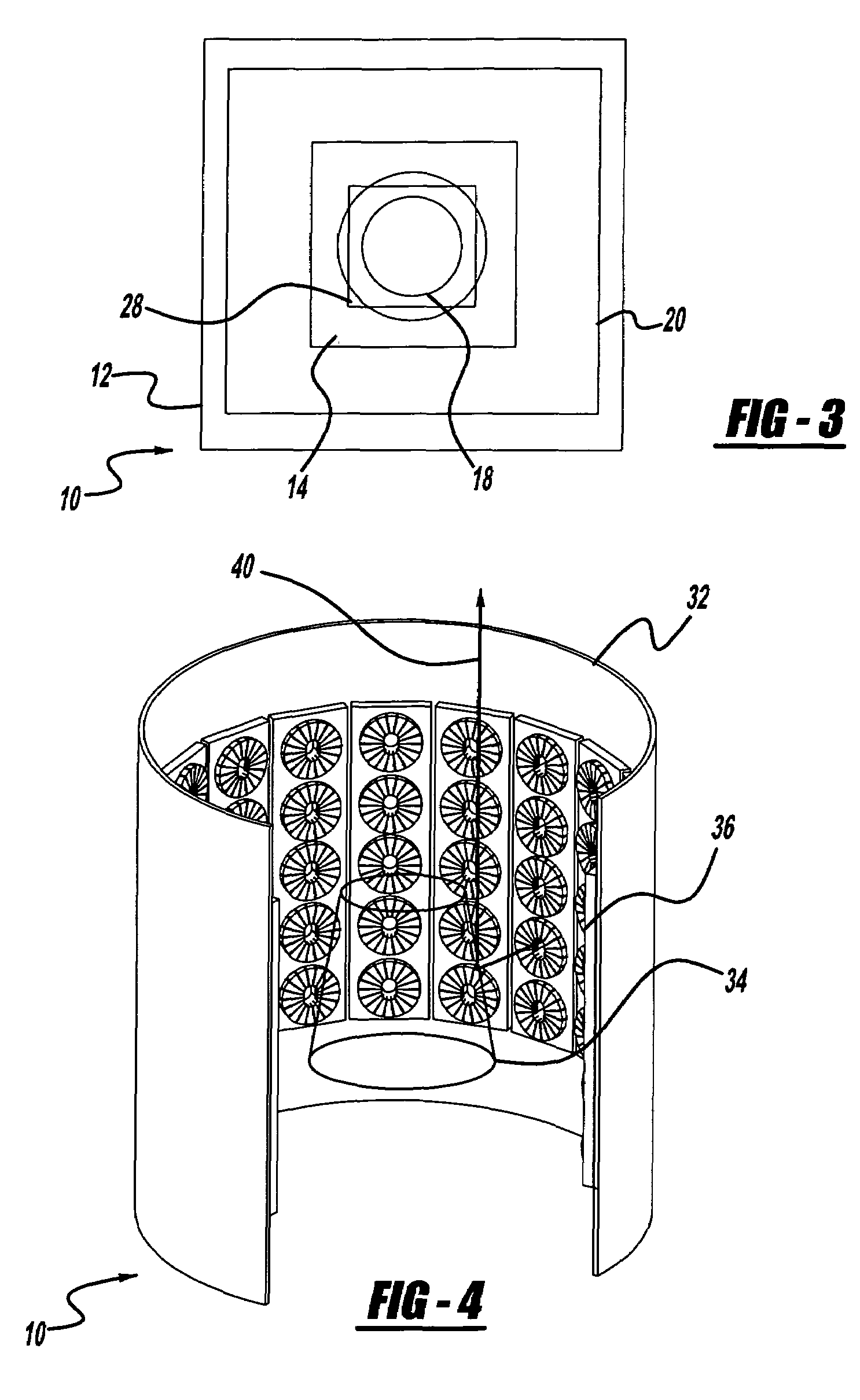Method and apparatus for a projection system
- Summary
- Abstract
- Description
- Claims
- Application Information
AI Technical Summary
Benefits of technology
Problems solved by technology
Method used
Image
Examples
first embodiment
[0032]With respect to the first embodiment shown in FIGS. 1 through 3, a projection system 10 is generally illustrated. It is understood that a cube has six sides. Referring now to FIG. 1, it is seen that embodiments of the present invention may use the form of a cube with the exception of one side. The present embodiment optionally uses five sides of a cube. Each of the sides, or on the five sides there's mounted, attached or secured in any fashion, light sources 12. The light source may be but is not limited to mercury, high pressure xenon, HID, LED, florescent etc., sources. It should be understood that, in some embodiments of the present invention, any means to produce light will be satisfactory. In the present embodiment, all of these light sources 12 will be mounted etc., on the inside surfaces so that they face each other or they all are directed to the virtual center point inside the cube. They can be directed to the center point of the cube by the method or means of an opti...
second embodiment
[0036]FIGS. 4 through 6 illustrate the projection system of the present invention having a conical configuration. According to this arrangement, a projection system, generally illustrated as 30, includes an LED cylinder housing 32, a reflective cone 34, and an LED array 36. (Note that FIGS. 4 and 6 are illustrated with a section taken out for ease of visualization.) The various light sources which in this embodiment is shown as an LED array 36 may direct light at the reflective cone 34 to direct light in the direction indicated by arrow 40. It should be understood that the system 30 may be but is not limited to combined for use with various elements of FIG. 2 by, in one non-limiting example, replacing system 10 with system 30.
[0037]Referring now to FIGS. 7A and 7B as a nonlimiting example, in one embodiment, the light source 12 may be but is not limited to a single LED assembly. This assembly may be but is not limited to the following components—LED light source 50, heat sink 52, an...
PUM
 Login to View More
Login to View More Abstract
Description
Claims
Application Information
 Login to View More
Login to View More - R&D
- Intellectual Property
- Life Sciences
- Materials
- Tech Scout
- Unparalleled Data Quality
- Higher Quality Content
- 60% Fewer Hallucinations
Browse by: Latest US Patents, China's latest patents, Technical Efficacy Thesaurus, Application Domain, Technology Topic, Popular Technical Reports.
© 2025 PatSnap. All rights reserved.Legal|Privacy policy|Modern Slavery Act Transparency Statement|Sitemap|About US| Contact US: help@patsnap.com



